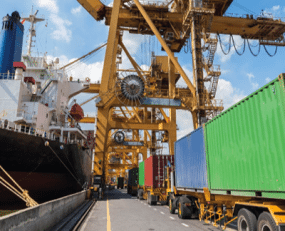
Ti’s new Global Freight Forwarding 2016 report explores contrast between contracting freight forwarding markets and the revenue growth of freight forwarders
21st June 2016, Bath, UK: Ti is pleased to announce that the latest edition of its best-selling report, Global Freight Forwarding, is now available to purchase. As with previous years, the report provides industry leading analysis of global, regional and country level freight forwarding markets as well as extensive profiles of the top 15 freight forwarders. In addition, for the first time, the comprehensive report also contains detailed analysis of the financial and volume performance of the most significant players.
The report, now published for its 10th consecutive year, states that whilst both the air and sea freight markets contracted, the result of continuing overcapacity, sea freight suffered the most, contracting by 2.8% in nominal terms. The collapse in the price of oil and excess capacity meant that carrier rates fell, but this did not seem to impact freight forwarders’ revenues too drastically.
According to Ti’s rankings of the top 20 sea freight forwarders, by both revenue and TEUs, the usual suspects compete for the top positions, however the real headline act from the rankings this year is DSV. In terms of sea freight revenues, when including the estimated full-year impact of its acquisition of UTi as well as the Danish company’s organic growth, DSV moves up the ranking from its former 7th position. The combined entity’s sea freight forwarding revenues are estimated to be around €800m larger compared to DSV a year ago.
The same is true for the air freight ranking by revenue, DSV has raced up the ranking into the top 10. However, the integration of UTi may well have a negative impact on growth, as the Danish company warned in its 2015 annual report.
Ti Economist David Buckby explained, “Looking ahead, it would be surprising if there were no further significant deals in the coming years to alter the landscape of the market even more. Further consolidation seems inevitable.”
Included within the report are profiles of the top 15 leading freight forwarders. These profiles include analysis of the company’s background, finances and technological capabilities, as well as a strategic profile and SWOT analysis.
Global Freight Forwarding 2016 is available to buy now or for more information on the report please click below: